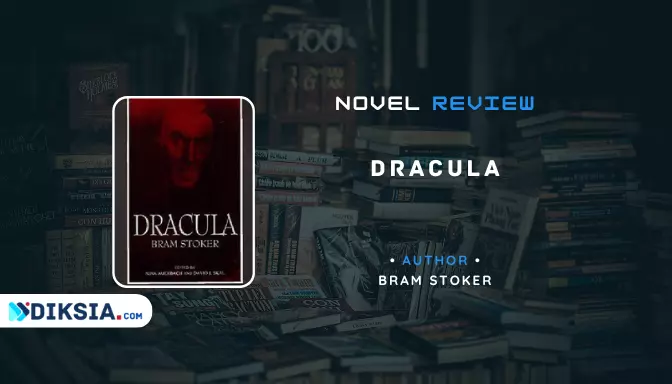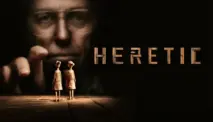The novel’s structure, incorporating diary entries and letters, adds depth and intimacy to the narrative, allowing readers to experience the events firsthand.
Dracula is a complex novel that combines different elements of plot structure. The novel can be divided into four parts:
- Part One: Exposition (Chapters 1-4). This part introduces the main characters (Harker, Dracula), the setting (Transylvania), the conflict (Dracula’s plan to invade England), and the tone (horror).
- Part Two: Rising Action (Chapters 5-21). This part develops the conflict by showing Dracula’s arrival in England, his attacks on Lucy and Mina, and the formation of the group of vampire hunters. It also introduces subplots, such as Renfield’s madness, Mina’s telepathy, and the clues left by Dracula.
- Part Three: Climax (Chapters 22-26). This part reaches the peak of the action and tension by showing the group’s pursuit of Dracula across Europe, their confrontation with his allies and enemies, and their final battle at his castle.
- Part Four: Falling Action and Resolution (Chapter 27). This part resolves the conflict by showing Dracula’s death, Mina’s recovery, and the group’s return to England. It also provides closure and reflection by showing the group’s epilogue seven years later.
Characters
Dracula features a large cast of characters, each with their own personality, background, and role in the story. The main characters are:
- Count Dracula: The antagonist of the novel. He is a centuries-old vampire who lives in a castle in Transylvania. He is cunning, ruthless, and powerful, but also lonely and isolated. He wants to expand his influence and create more vampires like him. He is fascinated by England and its culture, but also despises it as a threat to his existence. He is the embodiment of evil and corruption.
- Jonathan Harker: The protagonist of the novel. He is a young English lawyer who works for Mr. Hawkins, Dracula’s solicitor in London. He is brave, loyal, and intelligent, but also naive and curious. He travels to Transylvania to assist Dracula with his property transaction, but becomes his prisoner and witness to his horrors. He escapes and joins the group of vampire hunters. He loves Mina dearly and vows to protect her from Dracula.
- Mina Murray (later Harker): The deuteragonist of the novel. She is a young English woman who works as a schoolmistress and a typist. She is kind, gentle, and compassionate, but also strong, resourceful, and courageous. She is engaged to Jonathan Harker and waits for his return from Transylvania. She becomes friends with Lucy Westenra and helps her during her illness. She is bitten by Dracula and becomes his thrall, but also his weakness. She uses her telepathy to assist the group of vampire hunters. She marries Jonathan Harker and has a son named Quincey.
- Abraham Van Helsing: The tritagonist of the novel. He is an elderly Dutch professor who specializes in medicine, philosophy, metaphysics, and occultism. He is wise, experienced, and knowledgeable, but also eccentric and humorous. He is a mentor and friend to John Seward and a leader of the group of vampire hunters. He recognizes Dracula as a vampire and teaches the others how to fight him. He respects Dracula as an adversary but also hates him as an enemy.
- Lucy Westenra: A major character in the novel. She is a young English woman who is beautiful, wealthy, and popular. She is sweet, innocent, and generous, but also flirtatious and adventurous. She receives three marriage proposals from John Seward, Quincey Morris, and Arthur Holmwood, but chooses Holmwood as her fiancé. She becomes Dracula’s first victim in England and suffers from a mysterious illness that drains her blood. She dies and becomes a vampire herself, but is killed again by Van Helsing and her suitors, who free her soul from Dracula’s influence.
- John Seward: A major character in the novel. He is a young English doctor who runs an asylum near London, which happens to sit next to Dracula’s first English estate at Carfax. He is rational, scientific, and professional, but also emotional and passionate. He loves Lucy Westenra but is rejected by her. He remains friends with her and tries to cure her illness with Van Helsing’s help. He joins the group of vampire hunters and records their activities on his phonograph. He has a patient named Renfield who is obsessed with life force and serves as Dracula’s minion.
- Quincey Morris: A major character in the novel. He is a young American adventurer who travels around the world. He is brave, bold, and cheerful, but also reckless and impulsive. He loves Lucy Westenra but is rejected by her. He remains friends with her and offers his blood for her transfusion. He joins the group of vampire hunters and provides them with weapons and resources. He dies heroically in the final battle against Dracula, stabbing him in the heart with a knife.
- Arthur Holmwood: A major character in the novel. He is a young English nobleman who inherits the title of Lord Godalming after his father’s death. He is honorable, loyal, and generous, but also grief-stricken and distraught. He loves Lucy Westenra and proposes to her. He witnesses her decline and death and agrees to stake her heart with Van Helsing’s guidance. He joins the group of vampire hunters and uses his wealth and influence to help them.
- Renfield: A minor character in the novel. He is a patient at Seward’s asylum who suffers from a form of zoophagia, meaning that he eats living creatures to absorb their life force. He is obsessed with Dracula, whom he calls his “master” and tries to serve by inviting him into the asylum. He has moments of lucidity and remorse, and warns Mina of Dracula’s danger. He is killed by Dracula when he rebels against him.
Theme and Message
Dracula explores several themes and messages that reflect the concerns and values of the late Victorian era. Some of the major themes are:
- Good vs. Evil: The novel portrays a cosmic struggle between good and evil, represented by Dracula and Van Helsing’s group respectively. Dracula is associated with darkness, sin, corruption, and death, while Van Helsing’s group is associated with light, virtue, purity, and life. The novel suggests that evil can be defeated by faith, courage, and cooperation.
- Sexuality: The novel depicts sexuality as a powerful and dangerous force that can be used for good or evil. Dracula’s bite is a metaphor for sexual seduction and violation, as he penetrates his victims’ necks and exchanges blood with them. His bite also transforms his victims’ sexuality, making them more aggressive, sensual, and promiscuous. Lucy becomes a “voluptuous” vampire who preys on children, while Mina becomes a “bride” of Dracula who shares his thoughts and desires. The novel also implies a homoerotic subtext between Dracula and his male adversaries, as they exchange glances, words, and blood during their encounters. The novel contrasts Dracula’s sexuality with the idealized Victorian sexuality of marriage, fidelity, and chastity.
- Science vs. Superstition: The novel contrasts the rational and empirical approach of science with the irrational and mystical approach of superstition. Dracula represents the superstition of the East, as he uses magic, folklore, and religion to achieve his goals. Van Helsing represents the science of the West, as he uses medicine, technology, and logic to combat Dracula. However, the novel also shows that science alone is not enough to defeat Dracula, as Van Helsing also relies on superstition, such as garlic, crucifixes, and holy water. The novel suggests that science and superstition can complement each other in the fight against evil.
- Colonialism: The novel reflects the colonial anxieties of the British Empire at the end of the 19th century, as it faces threats from within and without. Dracula is a symbol of the colonized Other who invades the colonizer’s homeland and challenges its supremacy. He is a foreigner who speaks with an accent, dresses differently, has dark features, and practices a different religion. He also exploits the colonizer’s resources, such as money, land, and people, for his own benefit. He threatens to create a race of vampires who will overthrow the British rule and culture. The novel suggests that colonialism is a dangerous and immoral enterprise that can backfire on the colonizer.
Writing Style
Dracula is written in an epistolary style, meaning that it consists of various documents, such as letters, diary entries, newspaper articles, telegrams, and phonograph recordings, that are arranged chronologically and presented as evidence of the events that occurred.






